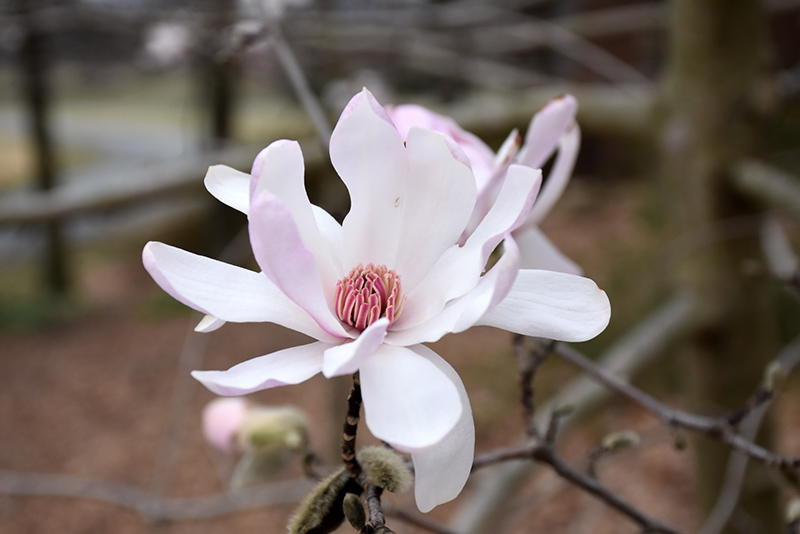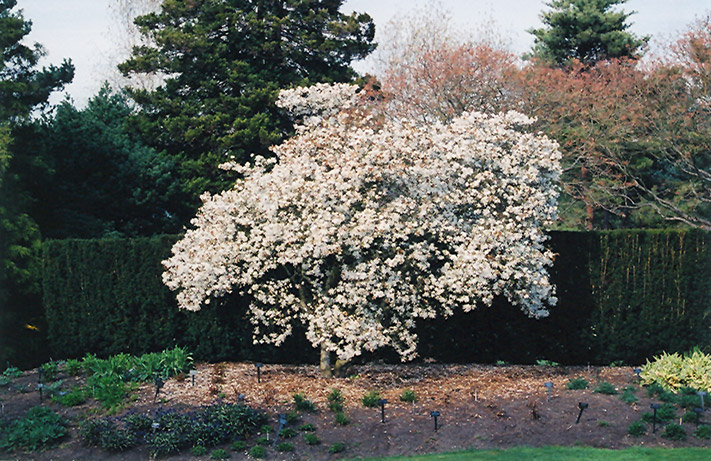Height: 15 feet
Spread: 10 feet
Sunlight:
![]()
![]()
Hardiness Zone: 4a
Description:
An ideal accent tree for smaller home landscapes, features extremely fragrant star-shaped snow-white flowers in early spring, upright and multi-stemmed with neat foliage; one of the hardiest, although flowers are occasionally damaged by late spring frosts
Ornamental Features
Star Magnolia is bathed in stunning fragrant white star-shaped flowers at the ends of the branches in early spring before the leaves. It has dark green deciduous foliage. The pointy leaves turn coppery-bronze in fall. The fruits are showy pink pods displayed in early fall.
Landscape Attributes
Star Magnolia is a dense multi-stemmed deciduous shrub with a shapely oval form. Its average texture blends into the landscape, but can be balanced by one or two finer or coarser trees or shrubs for an effective composition.
This is a relatively low maintenance shrub, and should only be pruned after flowering to avoid removing any of the current season's flowers. Deer don't particularly care for this plant and will usually leave it alone in favor of tastier treats. It has no significant negative characteristics.
Star Magnolia is recommended for the following landscape applications;
- Accent
- Mass Planting
- Hedges/Screening
- General Garden Use
Planting & Growing
Star Magnolia will grow to be about 15 feet tall at maturity, with a spread of 10 feet. It has a low canopy with a typical clearance of 5 feet from the ground, and is suitable for planting under power lines. It grows at a slow rate, and under ideal conditions can be expected to live for 80 years or more.
This shrub does best in full sun to partial shade. It requires an evenly moist well-drained soil for optimal growth, but will die in standing water. It is not particular as to soil type, but has a definite preference for acidic soils. It is quite intolerant of urban pollution, therefore inner city or urban streetside plantings are best avoided, and will benefit from being planted in a relatively sheltered location. Consider applying a thick mulch around the root zone in winter to protect it in exposed locations or colder microclimates. This species is not originally from North America.


